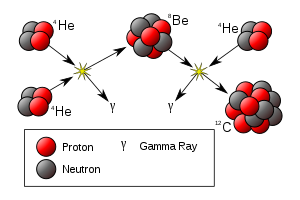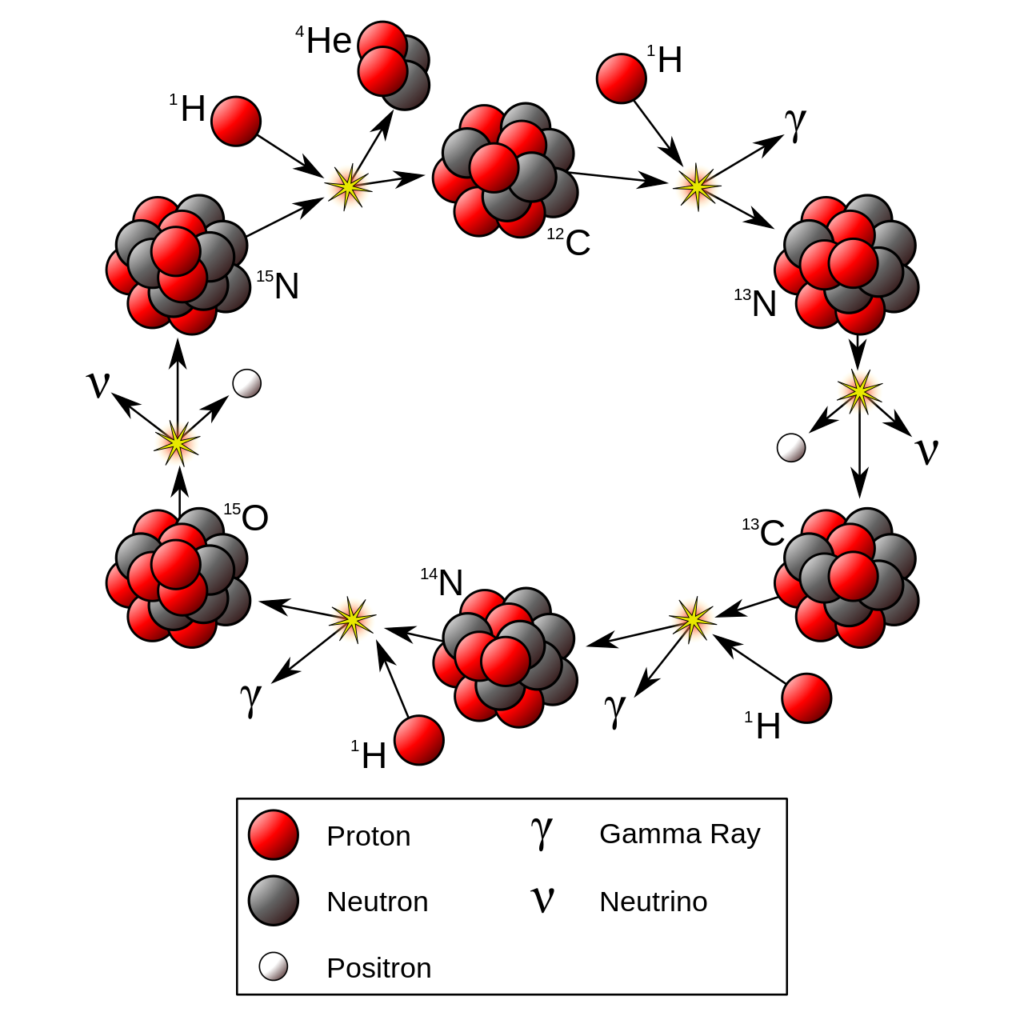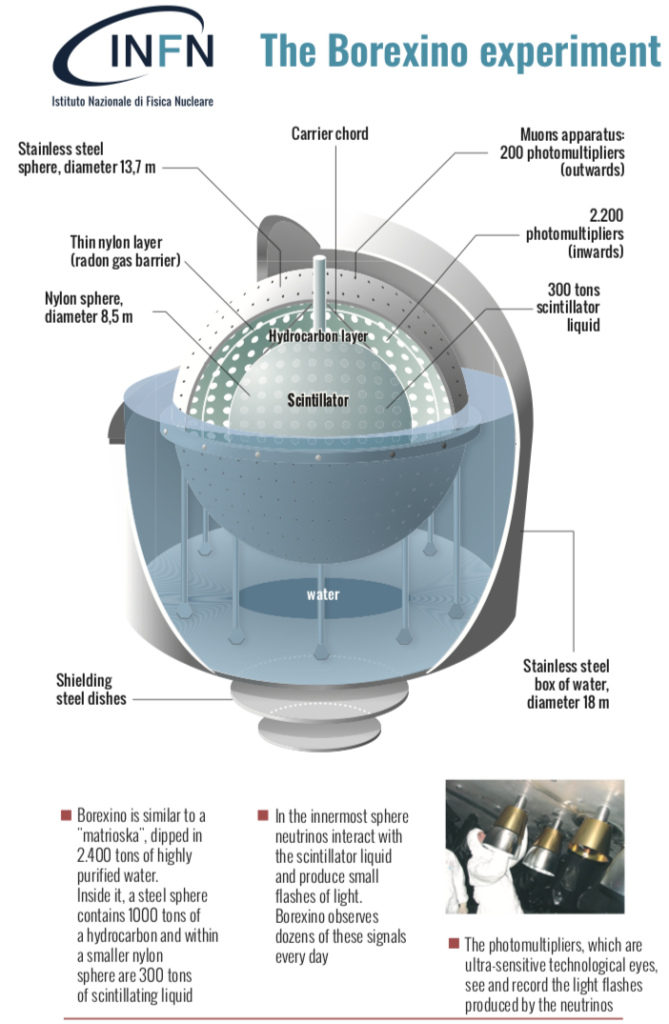Peter Lobner, 26 November 2020
Background
Fusion reactions in our Sun are predominately proton – proton reactions that lead to the production of the light elements helium, lithium, beryllium and boron. The next step up on the periodic table of elements is carbon.
Carbon is formed in our Sun by the “triple alpha” process shown in the following diagram. First, two helium-4 nuclei (4He, an alpha particles) fuse, emit a gamma ray and form an atom of unstable beryllium-8 (8Be), which can fuse with another helium nucleus, emit another gamma ray and form an atom of stable carbon-12 (12C). Timing is everything, because that fusion reaction must occur during the very short period of time before the unstable beryllium-8 atom decays (half life is about 8.2 x 10-17 seconds).

Stellar process for producing carbon-12. Source: Borb via Wikipedia
The carbon produced by the above reaction chain is the starting point for the carbon-nitrogen-oxygen (CNO) fusion cycle, which accounts for about 1% of the fusion reactions in a relatively small star the size of our Sun. In larger stars, the CNO cycle becomes the dominant fusion cycle.
The In the following diagram, the CNO cycle starts at the top-center:
- First, an atom of stable carbon-12 (12C) captures a proton (1H) and emits a gamma ray (γ), producing an atom of nitrogen-13 (13N), which has a half-life of almost 10 minutes.
- The cycle continues when the atom of nitrogen-13 decays into an atom of stable carbon-13 (13C) and emits a neutrino (ν) and a positron (β+).
- When the carbon-13 atom captures of a proton, it emits a gamma ray and produces an atom of stable nitrogen-14 (14N).
- When the nitrogen-14 atom captures a proton, it emits a gamma ray and produces an atom of oxygen-15 (15O), which has a half-life of almost 71 seconds.
- The cycle continues when the atom of oxygen-15 decays into an atom of stable nitrogen-15 (15N) and emits a neutrino (ν) and a positron (β+).
- After one more proton capture, the nitrogen-15 atom splits into a helium nucleus (4He) and an atom of stable carbon-12, which is indistinguishable from the carbon-12 atom that started the cycle.

Source: Borb via Wikipedia
As shown in the previous diagram, the CNO cycle generates characteristic emissions of gamma rays, positrons and neutrinos. With a neutrino detector, scientists would search for the neutrinos emissions from the nitrogen-13 and oxyger-15 decay steps in the CNO cycle.
The Big News!
On 25 November 2020, the Italian National Institute for Nuclear Physics (INFN) announced that a team of scientists, known as the Borexino Collaboration, had made the first detection of neutrinos that can be traced to CNO cycle at work within within the Sun. You can read the INFN press release here: https://home.infn.it/en/media-outreach/press-releases/4201-borexino-ottiene-la-prima-prova-sperimentale-di-come-brillano-le-stelle-massive-2
The Borexino experimental facility is located at the INFN’s Gran Sasso National Laboratories in the Apennine Mountains, about 65 miles (105 km) northeast of Rome. The official website of the Borexino Experiment is here: http://borex.lngs.infn.it
The Borexino neutrino detector is in a underground laboratory hall deep in the mountain, which protects the detector from cosmic radiation, with the exception of neutrinos that pass through Earth undisturbed. Even with the huge Borexino detector in this very special, protected laboratory environment, the research team reported that detecting CNO neutrinos has been very difficult. Only about seven neutrinos with the characteristic energy of the CNO cycle are spotted in a day.
The Borexino neutrino detector is shown in the following diagram.

INFN reported, “Previously Borexino had already studied in detail the main mechanism of energy production in the Sun, the proton-proton chain, through the individual detection of all neutrino fluxes that originate from it.”
For more information:
- The Borexino Collaboration., Agostini, M., Altenmüller, K. et al. “Experimental evidence of neutrinos produced in the CNO fusion cycle in the Sun,” Nature, 587, 577–582, 25 November 2020: https://doi.org/10.1038/s41586-020-2934-0
- Tom Metcalfe, “For the first time, scientists detect the ghostly signal that reveals the engine of the universe,” NBC News, 25 November 2020: https://www.nbcnews.com/science/space/first-time-scientists-detect-ghostly-signal-reveals-engine-universe-n1248982